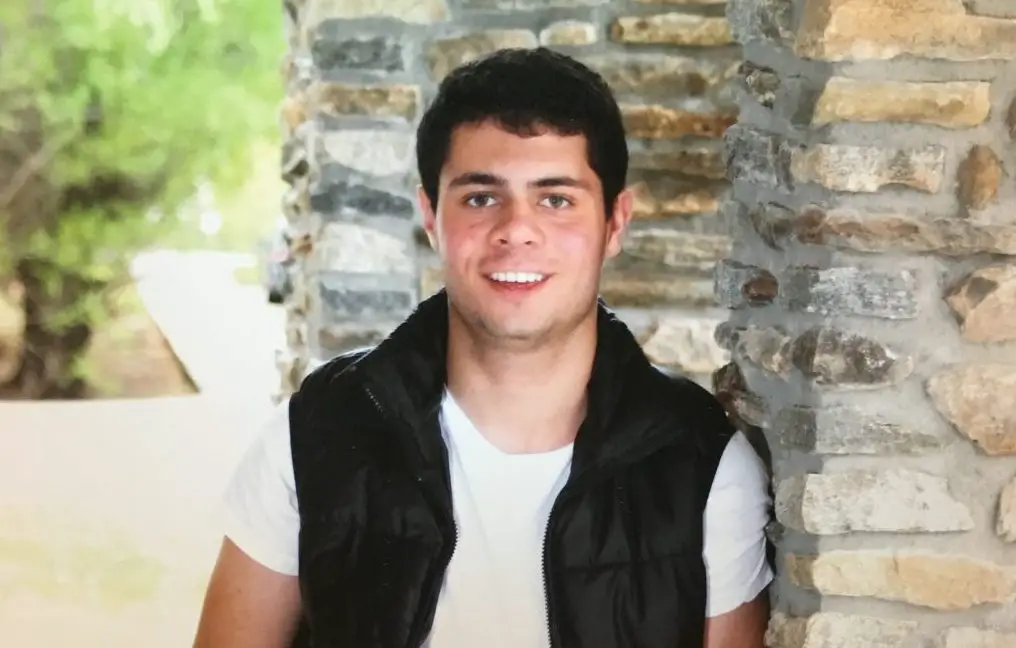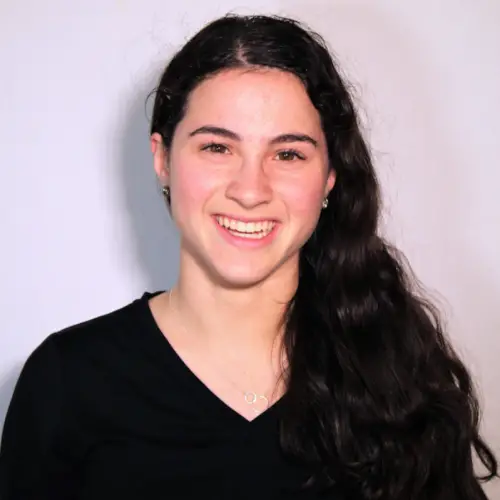On a mission to de-glamorize the issue of substance abuse, Alexandre “AJ” Davis is adding his voice to the national conversation about drug and alcohol addiction. The Brown University sophomore’s short film “Anybody in There” explores alcohol and opioid use in a high school setting, drawing from Davis’s own experiences and those of his co-directors, David Holmes and Robert Capron.
The film follows a 16-year-old named Peter, who struggles with drug addiction and lives from one drink to the next. The story delves into Peter’s turbulent home life, where his family also struggles with alcohol addiction.
The film isn’t pretty or telegenic by conventional standards. Davis goes for brutal honesty instead of romance, revealing the truth about drug abuse: addiction is not exciting or flashy. Rather, it’s a struggle which harms not only the individual but also those around him.
While “Anybody in There” is Davis’s most serious film yet, it isn’t his first. “I’ve always had the passion for movie making,” he says. As far as he can remember, he made his first real short film for his sixth-grade science class, when his teacher told him to make a project on Chernobyl.
Bored with the assignment, the young filmmaker instead decided to make a movie instead. Donning a “Lord of The Rings” costume beard and a Russian hat, Davis interviewed himself, switching from an American to a Russian accent. “This is great,” he says his teacher told him, “but it has nothing to do with science!”
By the time he got to Brown, Davis had worn many other hats in the filmmaking world. After the mock interview in sixth grade, Davis did some acting in high school; he also made several short films for non-profits. At Brown, AJ took a class called Screenwriting One. Having originally written “Anybody in There” as a short story in his senior year of high school, he rewrote it as a screenplay.
“I just went up to my two best friends and said, do you guys just want to make this?” he says. The subject was not only important, but extremely relatable to Davis and his friends, who were all substance-free.
Compared to the short story, both the screenplay and the film came with a few changes. “A lot of things that work in the medium of short stories don’t translate well to the screen,” Davis says, “so I had to make a lot of changes in the stories for the logistics of the filming, and in terms of how the story was told. For example, the short story takes place on a plane. There was no way a bunch of filmmakers with a Kickstarter of $2,000 could rent an airplane. Instead, we chartered a bus.”
To fund the film, Davis and his friends had taken to Kickstarter. To their surprise, they received double what they had originally requested. From there, “we just made the thing,” he says.
Of course, it wasn’t quite so easy. The entire process, from finalizing a script, filming all the scenes and enduring a long post-production process, took seven months and came with quite a few challenges.
The movie opens to a scene featuring high school kids on a bus. But how to acquire a bus? “We called every bus place in Providence. Then we found out that one of our producer’s friend’s friend’s cousin ran a bus company and somehow we got to charter a bus,” AJ says.
The finished product was something near and dear to Davis. While it didn’t tell his personal story, it did reflect parts of his life and the lives of his friends. “There was a kid I’d known since elementary school who died because of substance abuse. I’ve had friends who have gone to rehab, been through the whole process, and it really destroyed their lives.”
Davis and Holmes wanted to make “Anybody in There” different from other stories about alcohol and drug addiction. First, they wanted a film that would show the truth about drug addiction without romanticizing it; in addition, they wanted to show how alcohol addiction could affect young people.
“I knew that this is a narrative that is always glamorized in film,” Davis says. “It’s never really shown to affect young people. It’s usually about a 40-year old guy in a bar sometime in the afternoon, not a 16-year-old kid in high school who is doing drugs and drinking just to get through the day. That’s a very realistic narrative.”
Davis was determined to make a film that educates those who didn’t understand substance abuse about the reality of the struggle. In addition, he hoped that Peter’s story in “Anybody in There” would validate those who had undergone such an experience.
Showing the film at Brown brought an overwhelmingly positive response. Around 100 people, including the President of the University, attended the screening. Afterwards, Davis and his co-directors, along with Brown’s dean of chemical dependency and an addiction expert, held a panel discussing the movie’s portrayal of addiction and how it relates to college students.
After the panel, Davis says, several other students approached him to talk about the film. Some had struggled with addiction and wanted to talk about their experiences; others who were substance-free. Still others were not substance-free but were reconsidering it.
After many rejections, Davis and his co-directors landed a spot in their first-ever film festival, a Massachusetts independent film festival called Stories by the River. “People were a little shocked by our film; it’s pretty disturbing,” Davis says. Although they didn’t win, Davis and his friends say that they weren’t expecting that honor. Either way, the film festival gave them a chance to see what it takes to be the best: a bigger budget, for one.
“Anybody in There” gave Davis and his friends a chance to join in the national conversation about the substance abuse. In particular, the Brown sophomore claims that the dialogue going on in high schools and colleges needs to change immediately.
“When you’re out in a social setting in high school, the more you drink, the crazier you are, the more the masses applaud you. If that’s the case, then it’s actively promoted. Someone who has a serious problem can find validation in these parties,” he says.
“On most college campuses, parties are the main way to socialize and enjoy life. At Brown it’s a rite of passage when you’re emergency-medical-serviced. That’s really disconcerting. It’s actively promoted by colleges who hold events such as Spring Weekend where people just drink for two days straight.”
High schools and colleges normalize and encourage alcohol and drug abuse; by doing so, they’re putting young people at risk for addiction. Drug abuse isn’t some dazzling adventure, and perhaps it’s time the dialogue reflects that truth.
Davis’s passion and interest in the issue of substance abuse extends further than the world of film to activities on campus. At Brown, he heads an organization called the Sober Activities club, offering students substance-free alternatives to on-campus activities. During Spring Weekend, the club holds an off-campus getaway for those who would like to be away from alcohol and partying.
Looking into the future, Davis and Holmes are tackling a new issue: eating disorders. Their recently filmed movie, titled “Issued at Random,” follows a couple dealing with eating disorders on opposite sides of the spectrum, one with bulimia, and another with anorexia. “We don’t focus on the body, which is often done,” Davis says. “We focus more on the emotional toll that this puts on someone.”
“Anybody in There” and “Issued at Random” will both be available in September, 2018 on YouTube and Vimeo.

















